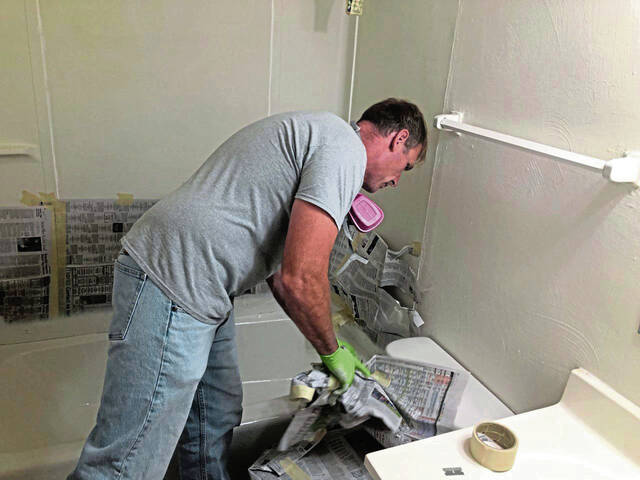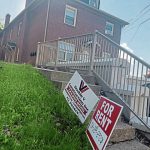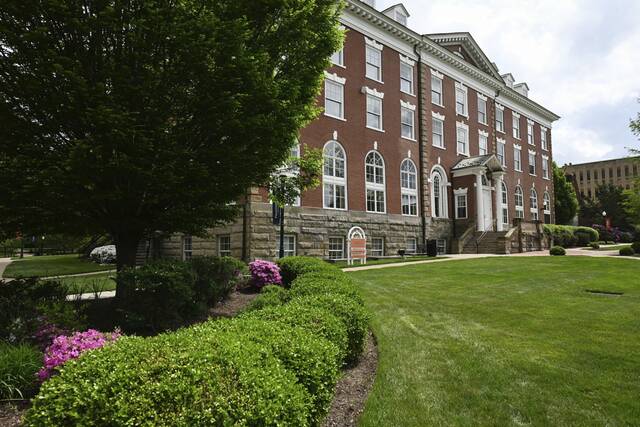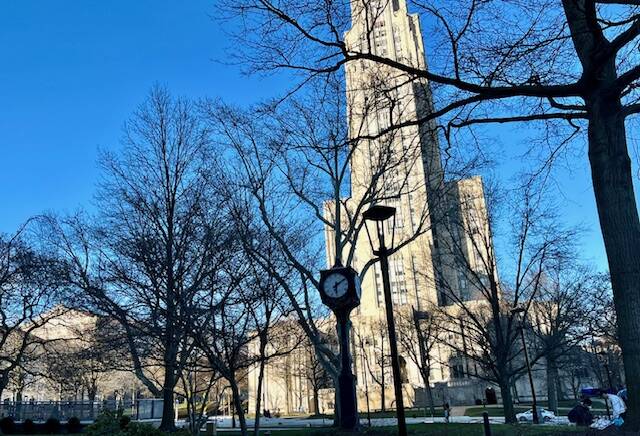Average rents in the Pittsburgh region have increased during the pandemic, and reports indicate certain areas are rising faster than others.
A report from real estate research firm CoStar Group showed Pittsburgh-area rents increased about 6% from the start of 2020 to March 2022, which was slower than the 11.3% national rate CoStar found during that time. CoStar said March average rent in the Pittsburgh region was $1,139, and the group gathered data from multifamily units in counties with more than 1,000 multifamily housing units.
Another report from real estate group Redfin showed rents might continue to increase moving into summer. Redfin reported rents in the Pittsburgh metro area have increased 15.5% since May 2021, which is in line with the national rent increase rate. Redfin data say average rents in the Pittsburgh area were $1,937 in May . Redfin’s reported rents were from the median cost of apartments that were available for new renters during the report month.
The Pittsburgh metro area includes Armstrong, Allegheny, Beaver, Butler, Fayette, Washington and Westmoreland counties.
According to CoStar data, which broke down the region by county, Allegheny County saw a pandemic rent growth of 6.9%, with average rents reaching $1,213 a month. Despite being the largest, and arguably most prosperous county, Allegheny actually was outpaced by Washington and Westmoreland counties, as well as Indiana County — which technically is located just outside of the Pittsburgh metro area.
Allegheny: up 6.9% to $1213 average rent
Indiana: up 8.1% to $1015 average rent
Westmoreland: up 8.1% to $804 average rent
Washington: up 7.7% to $1257 average rentWash now has the highest average rent in the region.
— Ryan Deto (@RyanDeto) May 4, 2022
Indiana and Westmoreland counties saw pandemic rent growth rates of 8.1%, with average rents of $1,015 and $804, respectively. Washington County saw its average rent increase 7.7% during the pandemic, up to $1,257 a month, the highest of any county in Southwestern Pennsylvania.
University of Pittsburgh economist Chris Briem said these exurban and rural rent increases coincide with census figures showing residential growth in some of these outlying counties, such as Westmoreland. He suspects a rise in remote work is giving workers the option to live in areas much farther away from traditional jobs centers of Downtown Pittsburgh and Oakland.
“Covid has sort of been a shock across the board, in the relationship of where people live and where they work,” Briem said.
Pittsburgh’s rural rental growth appears to be following some national trends. A CoStar report from March shows demand for multifamily properties increasing in rural areas, small towns and exurbs of large cities.
Otis DiCerbo, a North Huntingdon-based real estate investor and landlord, is the leading member of the Landlord Association of Westmoreland County. He acknowledged many Westmoreland-based landlords were increasing rents, most likely because of rising demand and higher costs for home repair and upkeep.
DiCerbo said he has noticed an uptick in people wanting to move to Westmoreland from Allegheny County, looking for more space and different school districts. He said there has been housing growth in North Huntingdon, Penn Township and Hempfield.
“Wherever you have new housing, there is a demand for it,” DiCerbo said.
He said rising costs of buying, renovating and maintaining properties have increased in some instances by 50%, and landlords are passing on some of those costs to renters.
“When investors and landlords are seeing more costs, they can only absorb so much, and it has a trickle-down effect on renters and buyers,” DiCerbo said.
‘Supply is the problem’
The rental market in the Greensburg-Latrobe area is “solid,” said Ralph Scalise, a real estate agent who owns Scalise Real Estate Co. of Latrobe and manages about 150 units in central Westmoreland County.
Tenants will pay a little more money in rent, Scalise said, but landlords are paying more in taxes, and the “insurance has really jumped” in price.
Part of the problem is there is a scarcity of rental units. Those that are available are leased “pretty quick,” and it is not unusual to have two or three people seeking the same unit, Scalise said.
To Marilyn Davis, a real estate agent with Berkshire Hathway HomeServices in Unity, the rental market is reacting to the imbalance between supply and demand. There is inflation of prices in this time of pandemic buying and renting, Davis said.
“I just think some people are taking advantage of the situation,” Davis said.
Timothy McCue is a broker with Agnes R. Nicklas Realtors and Associates in Buffalo Township. He agreed a lack of supply is an issue with rising rents, which has hit the Allegheny Valley, even if not as much as elsewhere in the region.
McCue said he manages 130 rentals throughout the valley, and none are vacant.
“Supply is the problem,” McCue said. “Rentals are just hard to find — decent ones anyway.”
He acknowledged that rent increases are not as bad in Pittsburgh as in other parts of the country, but added that construction costs and inflation hitting certain goods such as lumber exacerbate the issue locally. He said the valley needs more supply of units, but building new units is becoming more expensive, which in turn drives up rents.
“It all goes together. The price of lumber is through the roof,” McCue said. “A lot of people, when they build something new, they have to get their money back.”
A national issue
Rents are climbing across the nation. February marked the seventh consecutive month in which rent growth reached double digits — 17.1%, or four times the growth rate of March 2020, according to Realtor.com. The median rent in the 50 largest U.S. metro areas — which includes Pittsburgh — was a record $1,792, according to the latest figures.
Along with rent prices, concerns about rental affordability are up, according to Realtor.com. A rule of thumb is tenants should not spend more than 30% of their combined income on housing costs, which includes utilities. In February, the median rent in 14 of the top 50 metro areas had topped that threshold.
The Pittsburgh region ranked third as a place where it costs less to buy than to rent, saving about $585 a month on a mortgage for a starter home rather than paying $1,530 in median rent, according to Realtor.com.
Briem cautioned people from lumping Pittsburgh together with other U.S. regions. For one, he said, Pittsburgh’s rent growth is much slower than fast-growing regions, particularly in the Sun Belt. Regions such as Tampa saw a 29% increase in rents during the pandemic. Even a comparable region such as Cincinatti saw rent growth at 11% during the pandemic.
The Pittsburgh region had the 16th slowest rent growth of any U.S. metro area with more than 250,000 residents, according to CoStar. Redfin reported Pittsburgh has the 2oth slowest rent growth but was on pace with national average increases.
“Our rent increases may seem high, but they are a lot lower than a lot of other regions,” Briem said.
And the rural rental growth isn’t uniform across all Pittsburgh-area counties. Rents in Butler County, for example, barely nudged, growing just 0.4% over the pandemic and only increased by 0.7% in Armstrong County, according to CoStar.
Regardless, Briem said some forces are causing changes to the rental market in Pittsburgh, even if those aren’t having as drastic an impact as in other regions.
“I don’t think we have the same demand that is pressuring the real estate market in other cities, but we are still seeing shifts,” Briem said. “And that is generating some demand that wasn’t here before.”













